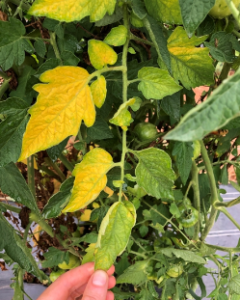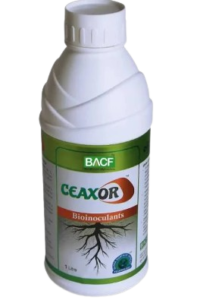Hello everyone ln this article we will know about fusarium wilt disease and it’s important factor like introduction, identification, cause of fusarium wilt precautions and its treatment.
Introduction of Fusarium Wilt Disease
Fusarium wilt is a plant disease caused by various species of the soil-bore fungus fusarium. These pathogens infect the vascular system of plants, leading to symptoms such of wilting, yellowing and necrosis of leaves it affect a wide range of crops, including tomatoes, banana and cotton.
Read more:
Identification of fusarium wilt Disease

- Identification of fusarium wilt Disease involves observation a combination of symptoms and conformation the presence of the pathogens lives in even, if soil moisture is adequate lower leaf turn yellow and may die of affect plant made drop leaf presently plant may exhibit stunted growth and reduce yields.
- when you cut the stem or root you may see brown or reddish discoloration in the vascular tissue infected plant tissue can be examine under a microbe scope to identify characteristic fusarium structure such as conidia and hyphae.
- Soil or plant tissue samples can be cultured on specific media to isolate and identify fusarium species. Fusarium built often appears in patches or rows reflecting its soil borne nature and spread pattern.
Cause of fusarium wilt Disease
- Fusarium wilt is caused by several species of the fusarium fungus which are soil born pathogen.
The fungi persist in the soil and enter plants through roots. - They thrive in warm moist soil condition. Plants without genetic resistance to fusarium wilt are more likely to be infected.
- Continuous cropping or insufficient crop rotation can increase soil pathogen loads. Use contaminated soil or equipment can spread the pathogen.
- High temperature and excessive moisture can exacerbate the disease by promoting fungal growth and spread.
- Using infected seeds or transplants can introduce the pathogen into new areas.
Precaution of fusarium Wilt
- Use resistant plant varieties that are not promote fusarium wilt. Rotate crops with non host plants to reduce the build up of fusarium pathogen in the soil.
- Maintain soil health by improving soil structure and fertilizer through practices like adding organic matter and avoid over fertilization.
- Clean tools, equipment and footwear to prevent the spread of pathogens from infected plants or soil.
- Use pathogen free seeds and transplants. Inspect soil and plant material for sign of disease before planting.
- Avoid over watering and ensure proper drainage to prevent creating favourable condition for the fungus.
- Regularly monitor plants for early plant symptom of fusarium wilt and take prompt action if detected.
- Allow fields to rest or be fallow between planting susceptible crops to reduce pathogen loads.
Read more:
Treatment of fusarium wilt Disease

- Treating fusarium wilt can be challenging due to its resistant nature in the soil.
- Planting crop varieties that are resistance to fusarium wilt is one of the most effective ways to manage the disease.
- Rotated crops with non host plant to reduce the presence of fusarium in the soil. Use soil solarisation technique to heat the soil and kill pathogens.
- This involves covering moist soil with clear plastic for several week in hot weather. Regular disinfect tools and equipment to prevent the spread of pathogen.
- Remove and destroy infected plants and to reduce source of infection. Incorporate organic matter to improve soil health and promote beneficial microbial activity that can suppress fusarium.
- Just soil pH is necessary as some fusarium species prefer specific pH range. Apply fungicide as a preventative measure or during early stage of infection, through their effectiveness can very and is often limited.
- Always follow application guidelines and regulations. Introduce beneficial microorganism or microbial inoculants that can compete with or suppress fusarium the soil.
- Avoid over watering and ensure proper drainage to prevent condition favorable for fusarium growth.
- Allow fields to be fallow or use non host crop to break these disease cycle.
Conclusion
Fusarium wilt it is a plant disease caused by various species of the soil borne fungus fusarium. This pathogen infect the vascular system of plant, leading to symptoms such as wilting, yellowing, and necrosis of leave.
It affect a wide range of crops, including tomatoes, bananas and cottons. This disease typically enters plant through the root and spread upward through the vascular tissues, blocking water and nutrient transport.
The impact of fusarium can be severe often resulting in reduce yield or complete crop failure if not managed properly. The use of resistance plant variety crop rotation soil fertilizers and proper sanitation practices.
1. What is the fusarium Wilt caused by?
Fusarium wilt caused by fungus genus Fusarium, particularly fusarium oxysporum. The pathogen infect the vascular system of plants leading to wilting, yellowing of leaves, and overall plant decline.
2. What is the best fungicide for fusarium wilt disease?
The best fungicides for fusarium wilt include azoxystrobin, fluopyram and propiconazole. For effective control use these as part of integrated management plan.
3. What is chemical is used to fusarium wilt disease?
Chemical commonly used for managing cesarean wealth include azoxystrobin, fluopyram and propiconazole. These chemical are often applied as part of a broader integrated disease management strategy.
4. What temperature kills fusarium disease?
Fusarium fungi are sensitive to high temperature. Soil temperature above 60-70 degree Celsius can kill fusarium spores and mycelium. Soil solarisation, a technique involving covering soil with clear plastic to trap solar energy and raise temperature, can effective in reducing fusarium population.
5. How to treat for fusarium Wilt disease?
Inspect plant look for wilting and yellowing. Cut and check for brown discoloration in vascular tissues. Cultural plant tissue on select media to identify fusarium.
6. How to treat wilt?
To treat Fusarium wilt disease:- Use resistant varieties, apply fungicides, practice crop rotation and remove infected plants.
